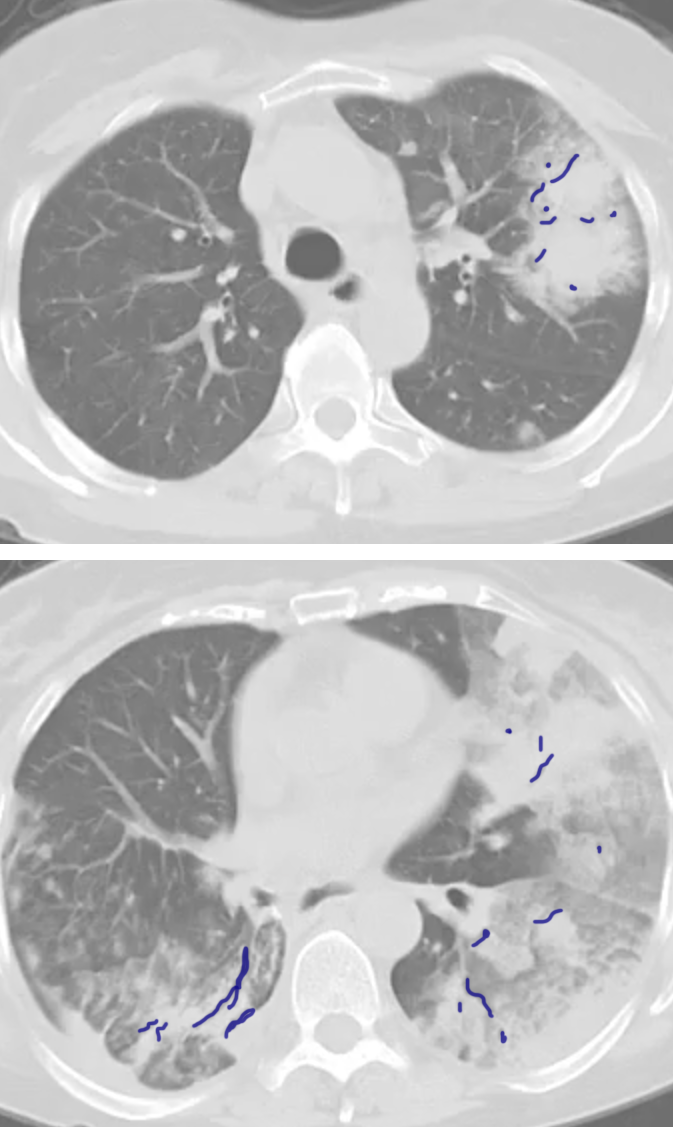
















Case 1
This case has to do with what diagnoses should be considered for interstitial and alveolar patterns in the lungs. You are shown the chest radiographs of two patients with shortness of breath.
Question 1:
What adjectives would you use to describe the lung findings in each case? How would you describe the distribution in each case? What diagnoses would you consider with the following additional history: fever and shaking chills.
Case A shows many abnormal overlapping lines in the lungs, producing what is called a 'reticular' pattern. Other good terms are 'linear', 'well-defined', or 'criss-crossing'. The distribution of disease seems to be worst in the upper lungs bilaterally. Case B shows opacities in the lungs that are ill-defined. Other good terms are 'fluffy', 'coalescent' or 'hazy'. The distribution of disease seems to be worst in the central lungs bilaterally. For fever and chills, the main consideration should be infection. In case A, since the pattern is interstitial, an atypical pneumonia such as Mycoplasma or viral could be considered. In case B, since the pattern is alveolar, bacterial pneumonia should be considered such as Klebsiella, Legionella or Staph.




Case 1
You are shown an imaging study on a different patient with chronic shortness of breath.
Question 2:
Decide what this imaging study is, and whether the lung findings appear interstitial or alveolar in pattern. What diagnoses would you consider if this patient had no fever but weight loss? What about the contrasting case below?
This is an axial CT displayed with lung windows, and shows typical fluffy, ill-defined lung opacities that obscure vessels, consistent with an alveolar process. Many lobes are involved including the left upper lobe and both lower lobes. Click on the links below to see fissures, labeled lobes involved, and a few air-bronchograms, which are typical for alveolar processes. You are also shown a CT example of an interstitial process to contrast with this case, with fine, criss-crossing linear opacities producing a reticular pattern. While we often think of alveolar processes being pneumonia, there are many other differential considerations that depend on additional history. If the patient has no fever but weight loss, neoplasm should be considered. Various neoplasms in the lung can appear with either interstitial or alveolar patterns, including lung cancer or lymphoma.








